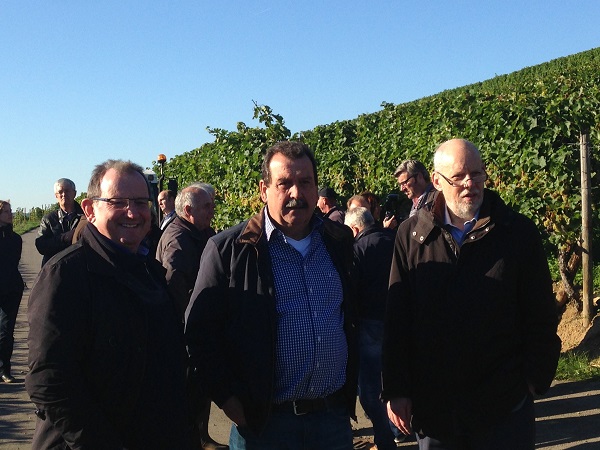
Due to its dryness and warmth, the 2015 vintage holds significant similarities to that of 2003, the Ministry of Agriculture, Viticulture and Consumer Protection announced Wednesday following a visit to the Moselle vineyards.
The year began with a mild winter from which snow and frost were virtually absent, followed by a relatively dry March and an unusually warm and dry spring during the month of April. Budding occurred quickly and regularly.
In May, the dryness intensified, with weather stations along the Moselle reporting less than half the multiannual rainfall. As a result of these premature summer conditions, the vines developed a week ahead of the multi-year average and the hot and dry climate allowed the vines to flower quickly without sagging in the month of June.
The lack of rain and humidity prevented the development of fungal diseases such as mildew, black rot or parasites, although the heat wave in June did increase the risk of powdery mildew. However, the unusually dry climate did bring its downsides, with plantations younger than five years old beginning to visibly suffer from the beginning of July. With a heat wave bringing temperatures exceeding 35°C along with insufficient rainfall, many young plantations showed leaf discolouration and sagging branches.
These weather conditions continued into August. Ripening began ten days early compared to the multi-year average during the first week of August. The general lack of rain affected the evolution of the grape maturation as this phases requires specific amounts of nutrients carried through ground water. Depending on the location of the vineyards, a slow maturation process subsequently resulted.
The month of September brought an end to the drought, with more than twive the normal rainfall recorded descending on the Luxembourg Moselle up until the final day of September. This newfound water supply was able to offset a significant portion of the delay to maturation, and together with the absence of fungal diseases very healthy, high quality grapes were produced. However, the risk of dry rot still remains a threat to achieving optimal physiological maturity.
The harvest is now in full swing both in the Moselle and the vineyards of Luxembourg City, and current sunny and dry weather conditions and cool nights are ideal for the final maturation of the grapes.
The total harvest for the 2015 vintage has been estimated for around 120,000 hectolitres across the Luxembourg Moselle. This quantity would correspond to a normal harvest over an average of ten years.
The 'Fiederwaissen', officially released on September 30 2015, offers a first overview on the quality of the 2015 vintage.
To find out how Bernard Massard produces its wines, click here.
Photo by MAVPC (L-R: Minister of Agriculture, Viticulture and Consumer Protection, Fernand Etgen; First Advisore to the Government, André Vandendries)








